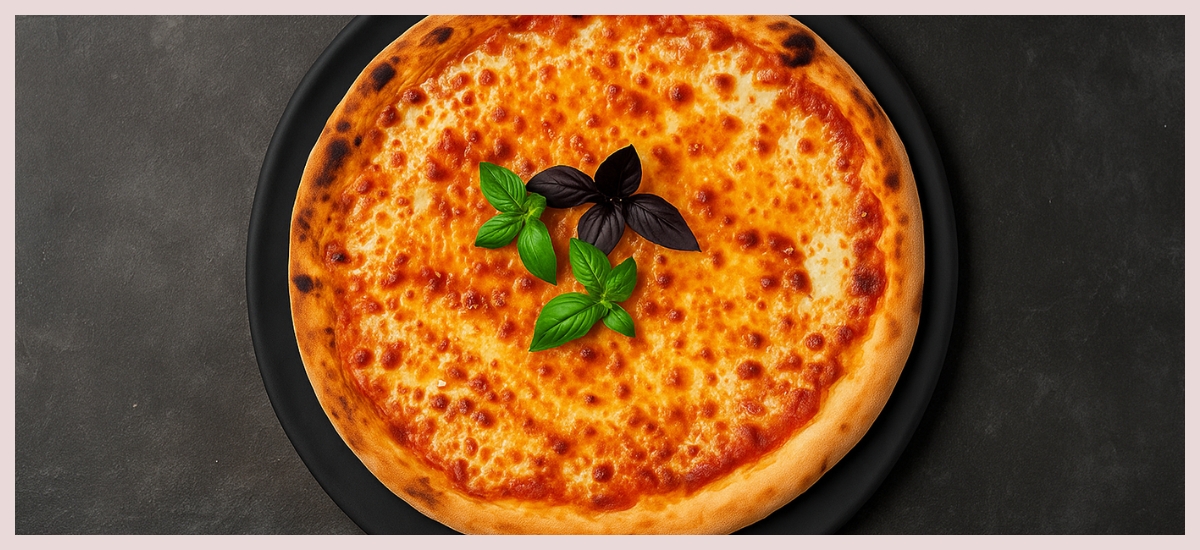When it comes to comfort food that never fails, pizza stands at the top of the list. But not all pizzas are created equal. The authentic Italian pizza is in a league of its own – a harmonious balance of simplicity, tradition, and high-quality ingredients. Unlike commercial versions overloaded with cheese and toppings, a true Italian pizza relies on the purity of flavors and age-old culinary techniques passed down through generations. In this blog, we reveal the secrets that make Italian pizza so unforgettable and how you can spot – or even recreate – an authentic one.

The Origins of Pizza in Italy
The story of pizza begins in Naples, a bustling city in southern Italy. In the late 18th century, pizza became popular as a street food among the working class. It was affordable, easy to eat on the go, and incredibly satisfying. The classic Pizza Margherita – made with tomatoes, mozzarella, and basil – was born in honor of Queen Margherita of Savoy and reflected the colors of the Italian flag.
Today, traditional Neapolitan pizza is a certified cultural treasure. UNESCO has even recognized the art of Neapolitan pizza-making as part of the intangible cultural heritage of humanity.
The Dough: Slow Fermentation is Key
One of the biggest secrets to authentic Italian pizza lies in the dough. It is not rushed. Italian pizzaiolos (pizza makers) allow the dough to ferment for up to 48 hours. This slow fermentation breaks down gluten, improves digestibility, and adds a subtle sour flavor to the crust.
The ingredients are few but must be of the highest quality: soft wheat flour (preferably type 00), water, sea salt, and a small amount of yeast. The dough is never rolled with a pin. Instead, it is stretched gently by hand to preserve the air bubbles that create the perfect texture – crisp on the outside and soft on the inside.
The Sauce: Simplicity at Its Best
In an authentic Italian pizza, the tomato sauce is fresh, unadorned, and full of flavor. Most pizzaiolos use San Marzano tomatoes, grown in the volcanic soil near Mount Vesuvius. These tomatoes are sweet, low in acidity, and offer a naturally rich taste.
Unlike commercial pizzas that cook the sauce before applying it, traditional Italian pizza uses raw crushed tomatoes. The sauce is seasoned lightly with salt, a touch of olive oil, and maybe a few basil leaves. This lets the natural sweetness of the tomatoes shine through when baked.
The Cheese: Only the Best
For most Italian pizzas, mozzarella di bufala or fior di latte (cow’s milk mozzarella) is the cheese of choice. These varieties are creamy, mild, and melt beautifully without becoming greasy. The cheese is added in moderation – just enough to complement the other ingredients without overwhelming them.
A common mistake outside of Italy is overloading the pizza with cheese, which masks the delicate flavor balance. In Italy, less is truly more.
The Oven: Fire and Precision
Another defining feature of authentic Italian pizza is the oven it is cooked in. Traditional pizzas are baked in wood-fired ovens at extremely high temperatures – usually around 450 to 500°C (850 to 900°F). This intense heat cooks the pizza in just 60 to 90 seconds.
The result? A crust that is slightly charred, chewy, and full of character. The cheese melts to perfection, the sauce stays fresh, and the overall texture is unbeatable.
The Toppings: Thoughtful and Fresh
Toppings on an Italian pizza are minimal but carefully selected. Whether it is fresh basil, thinly sliced prosciutto, mushrooms, olives, or arugula, everything is added with purpose. You will not find pineapple or barbecue sauce here. The philosophy is to highlight natural flavors, not drown them.
Regional variations also bring their own charm. In Rome, you might find a crispier crust, while in Sicily, toppings like anchovies and capers are more common. Despite these differences, the emphasis on authenticity and balance remains constant.
The Eating Experience: Simple and Social
In Italy, pizza is not fast food, it is an experience. It is often enjoyed at a leisurely pace, with good company and a glass of wine or beer. Many Italians order their own pizza rather than sharing, allowing each person to savor their preferred style and flavor.
Pizza is not just a meal in Italy; it is a celebration of community, conversation, and culinary pride.
How to Identify or Make an Authentic Italian Pizza
If you want to identify or recreate an authentic Italian pizza, remember these essentials:
- Use fresh, high-quality ingredients.
- Allow the dough to ferment for at least 24 hours.
- Keep the sauce simple and uncooked.
- Choose mozzarella made from buffalo or cow’s milk.
- Cook in a wood-fired oven or use a pizza stone in a very hot oven.
- Do not overload with toppings.
Mastering these principles can bring a slice of Italy right into your kitchen.

If you are in Berlin and longing for a true taste of Italy, look no further than Imperator Pizza. Known for its commitment to tradition and flavor, Imperator serves some of the most authentic Italian pizzas in the city. Whether you’re enjoying a classic Margherita or a more creative variation, each bite offers that irresistible balance of crispy crust, rich tomato sauce, and melted cheese. Imperator brings the soul of Naples to Berlin – making it a must-visit spot for pizza lovers.
Final Thoughts
Authentic Italian pizza is a testament to how simple ingredients, when treated with care and tradition, can create something extraordinary. It is not about extravagance. It is about balance, texture, and flavor that speaks for itself. The next time you bite into a pizza, take a moment to notice the crust, the sauce, the cheese, and how they come together in perfect harmony.
Whether you enjoy a Margherita in Naples or try to recreate one at home, you are tasting a slice of Italian history and craftsmanship. It is no wonder that pizza has become a worldwide obsession.
To enhance your experience, please follow us on Instagram.

